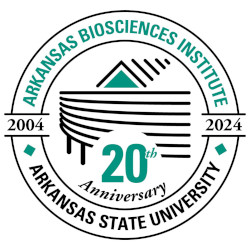Gold Nanorod Substrate for Rat Fetal Neural Stem Cell Differentiation into Oligodendrocytes
Document Type
Article
Publication Title
Nanomaterials (Basel, Switzerland)
PubMed ID
35335742
Abstract
Gold nanorods (AuNRs) have been proposed to promote stem cell differentiation in vitro and in vivo. In this study, we examined a particular type of AuNR in supporting the differentiation of rat fetal neural stem cells (NSCs) into oligodendrocytes (ODCs). AuNRs were synthesized according to the seed-mediated method resulting in nanorods with an aspect ratio of around 3 (~12 nm diameter, 36 nm length) and plasmon resonance at 520 and 780 nm, as confirmed by transmission electron microscopy (TEM) and UV-vis spectroscopy, respectively. A layer-by-layer approach was used to fabricate the AuNR substrate on the functionalized glass coverslips. NSCs were propagated for 10 days using fibroblast growth factor, platelet-derived growth-factor-supplemented culture media, and differentiated on an AuNR or poly-D-lysine (PDL)-coated surface using differentiation media containing triiodothyronine for three weeks. Results showed that NSCs survived better and differentiated faster on the AuNRs compared to the PDL surface. By week 1, almost all cells had differentiated on the AuNR substrate, whereas only ~60% differentiated on the PDL surface, with similar percentages of ODCs and astrocytes. This study indicates that functionalized AuNR substrate does promote NSC differentiation and could be a viable tool for tissue engineering to support the differentiation of stem cells.
DOI
10.3390/nano12060929
Publication Date
3-11-2022
Recommended Citation
Sharma, Krishna Deo; Alghazali, Karrer M.; Hamzah, Rabab N.; Pandanaboina, Sahitya Chetan; Nima Alsudani, Zeid A.; Muhi, Malek; Watanabe, Fumiya; Zhou, Guo-Lei; Biris, Alexandru S.; and Xie, Jennifer Yanhua, "Gold Nanorod Substrate for Rat Fetal Neural Stem Cell Differentiation into Oligodendrocytes" (2022). Arkansas Biosciences Institute. 32.
https://arch.astate.edu/abi/32


